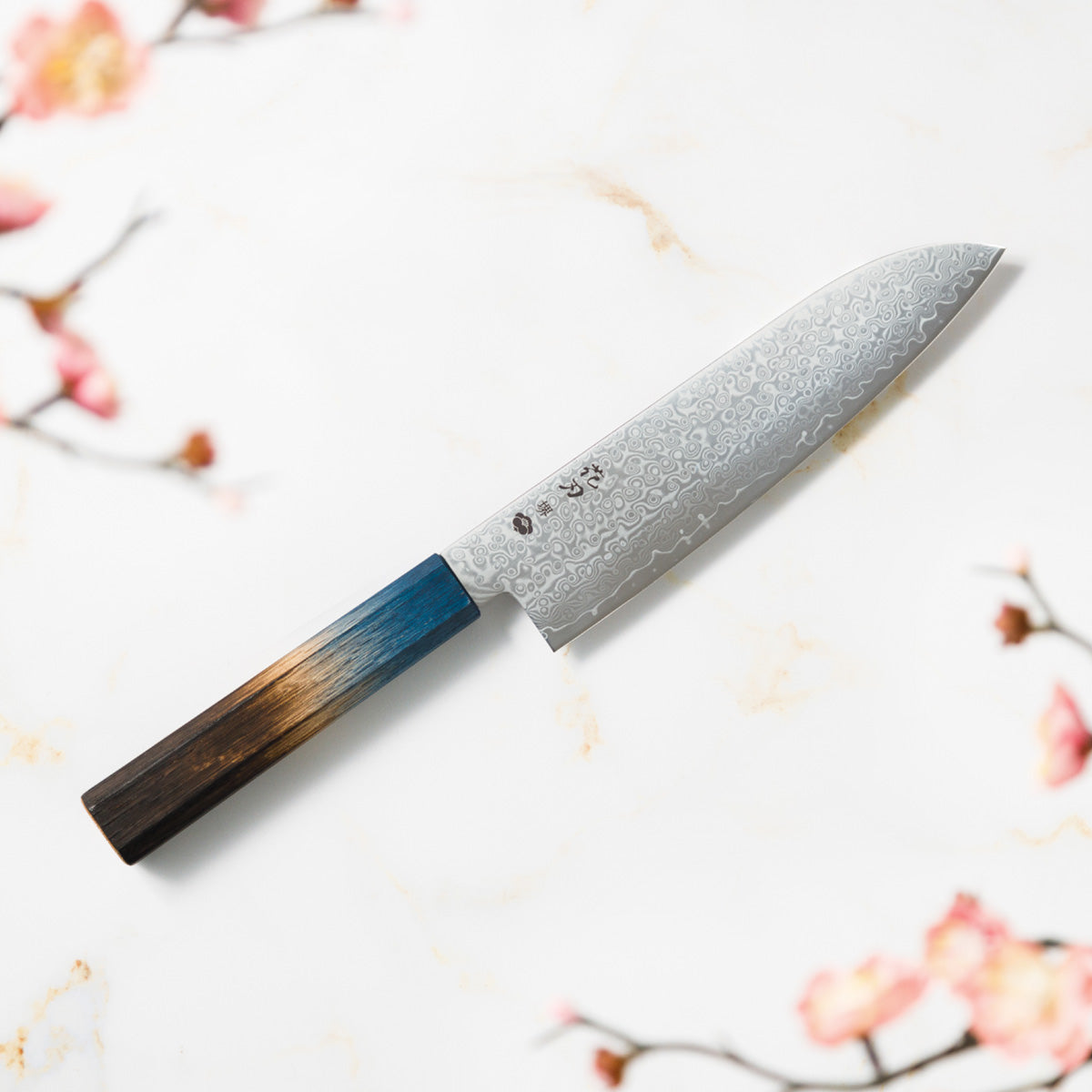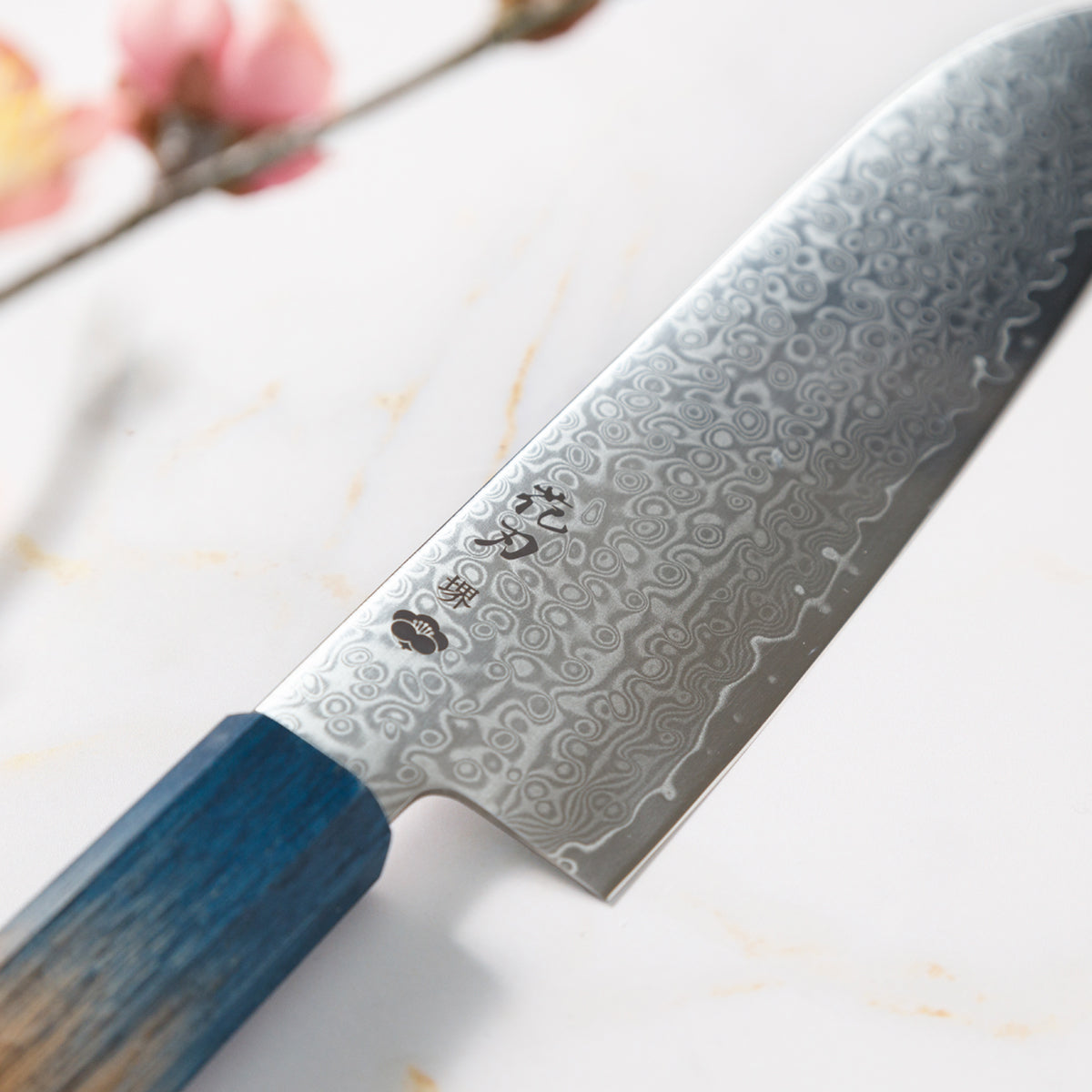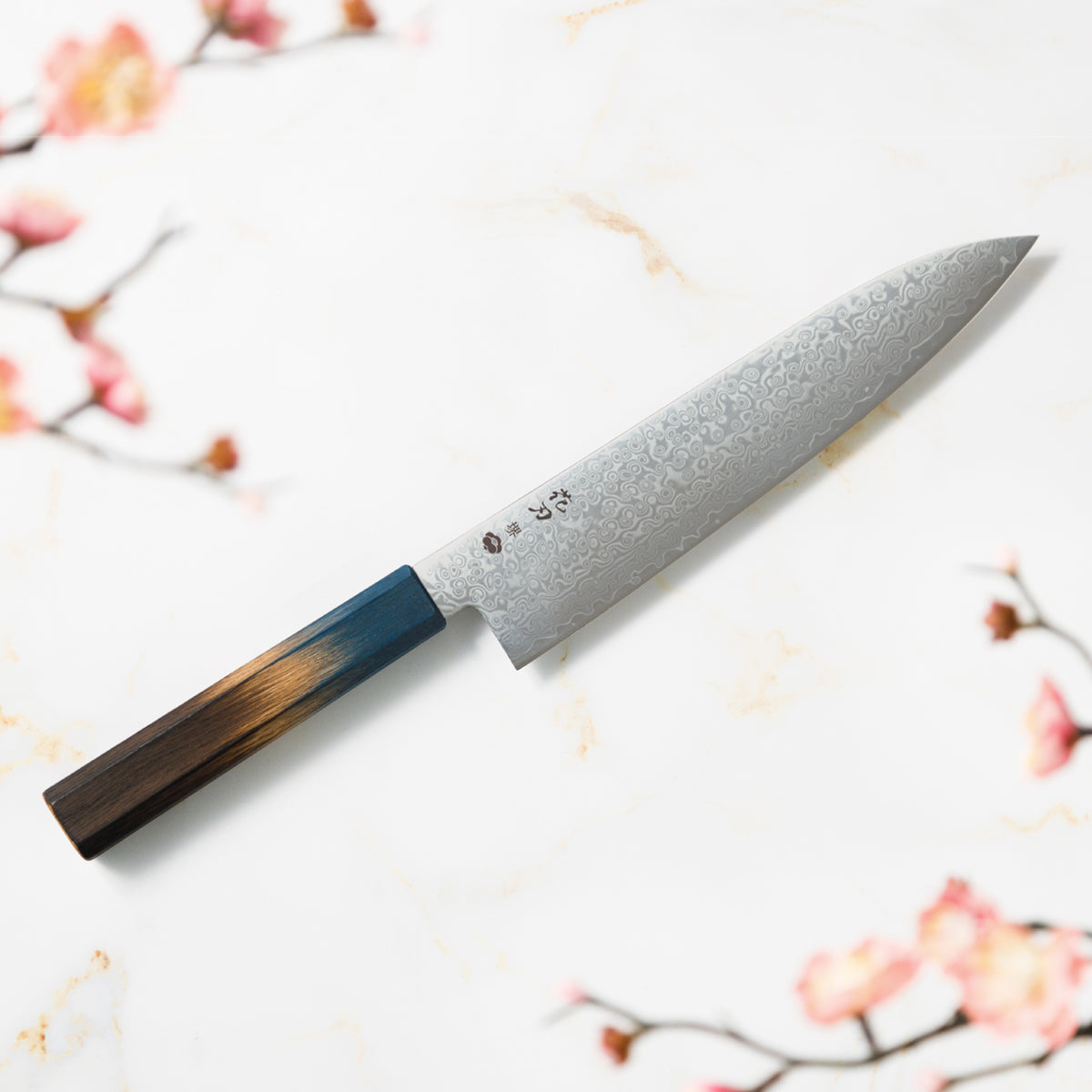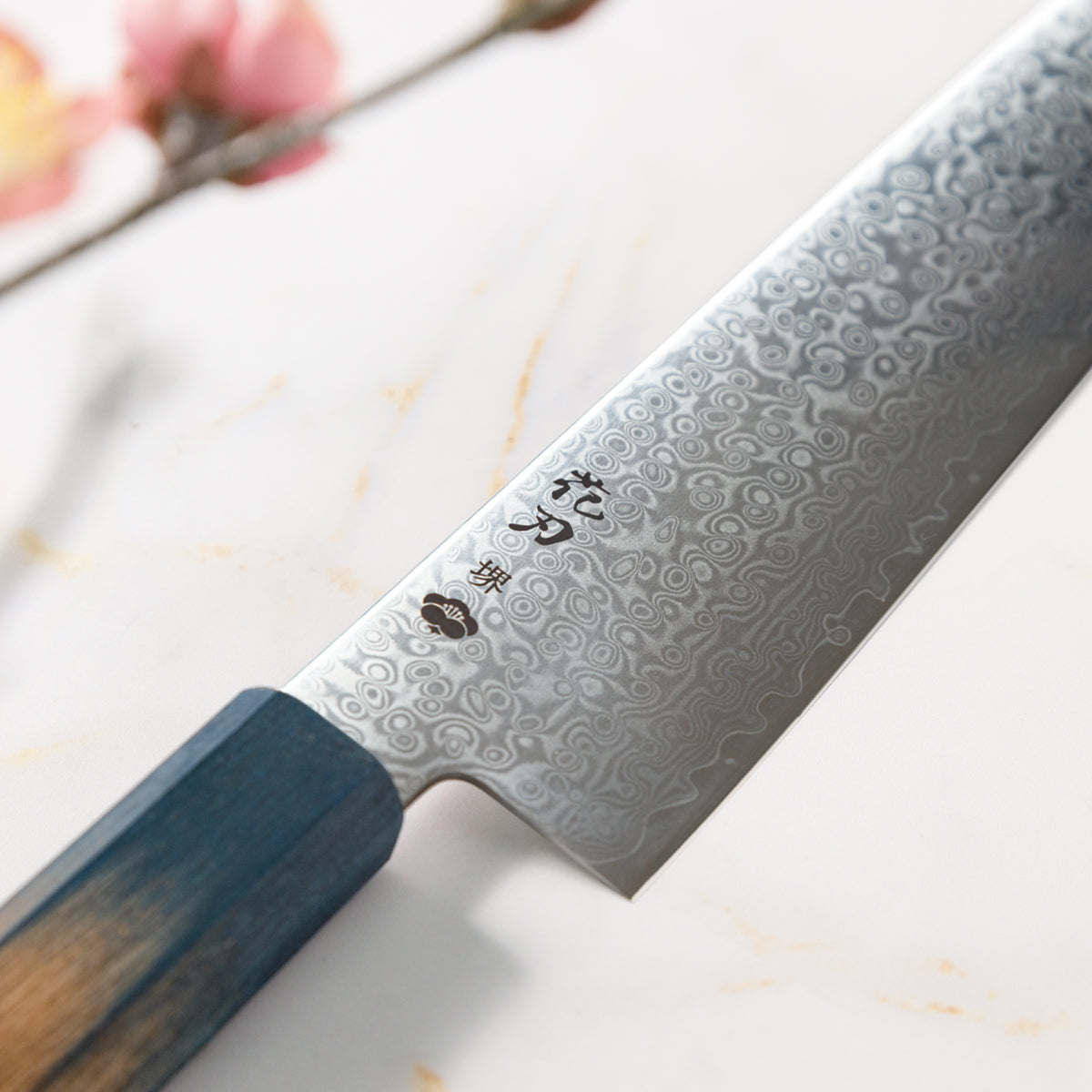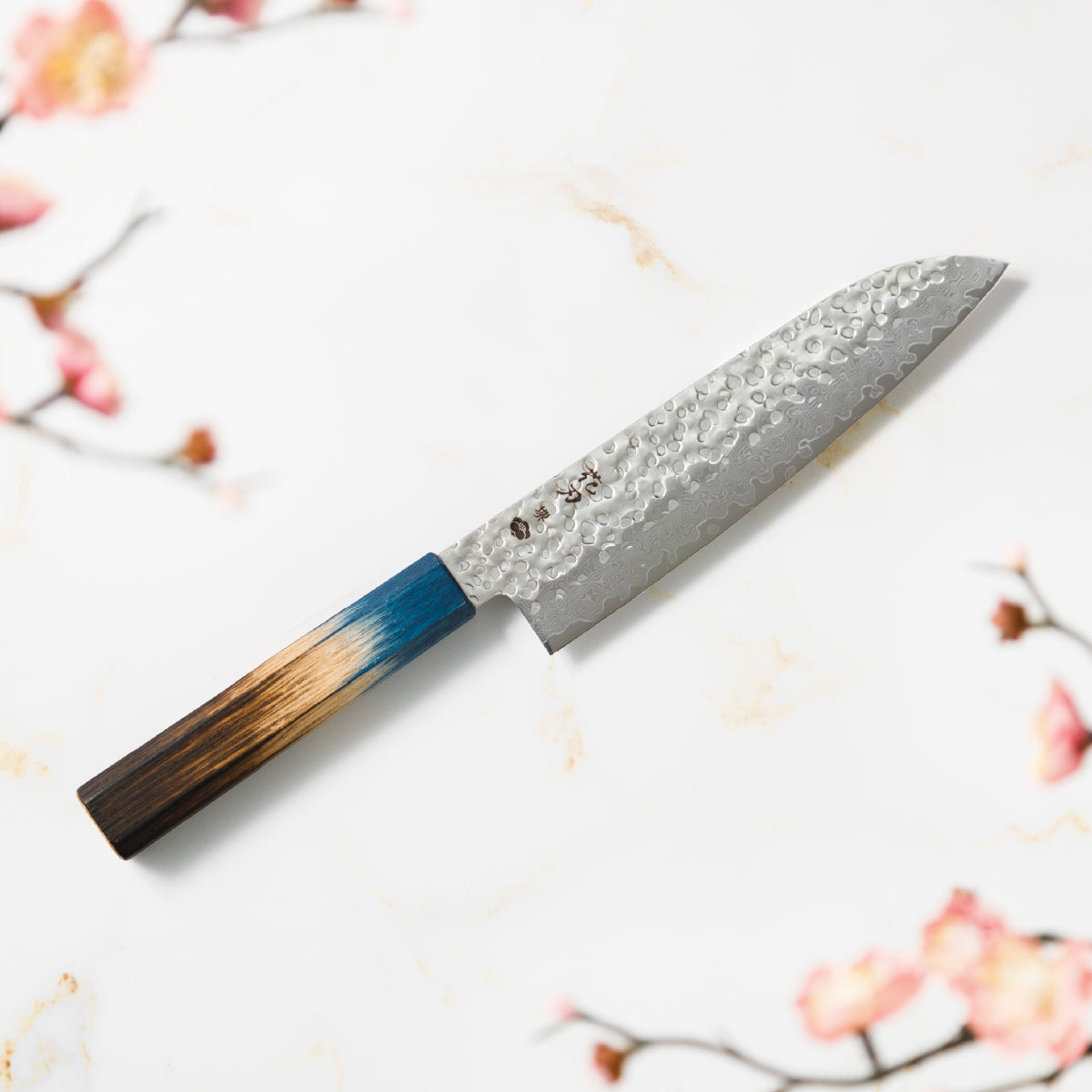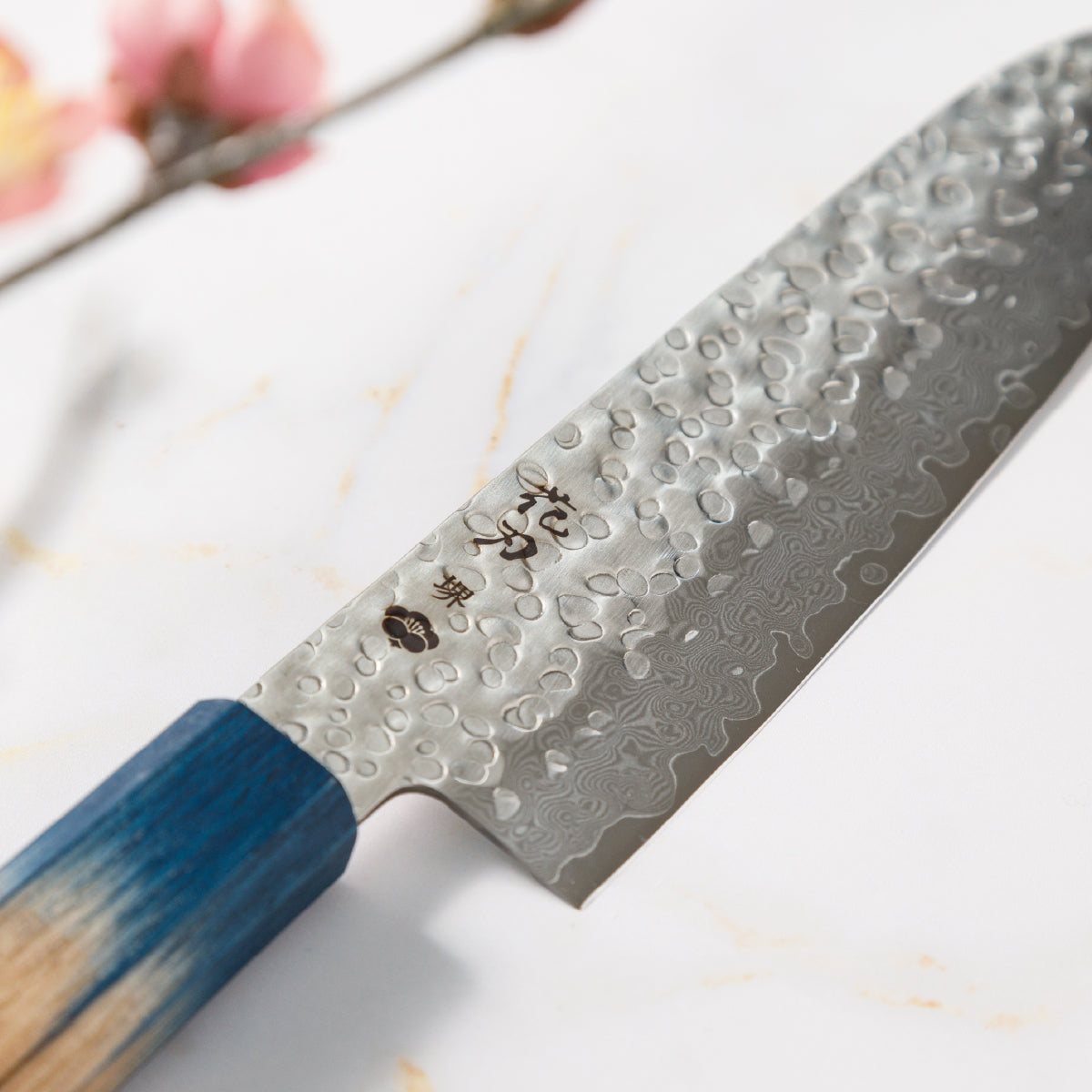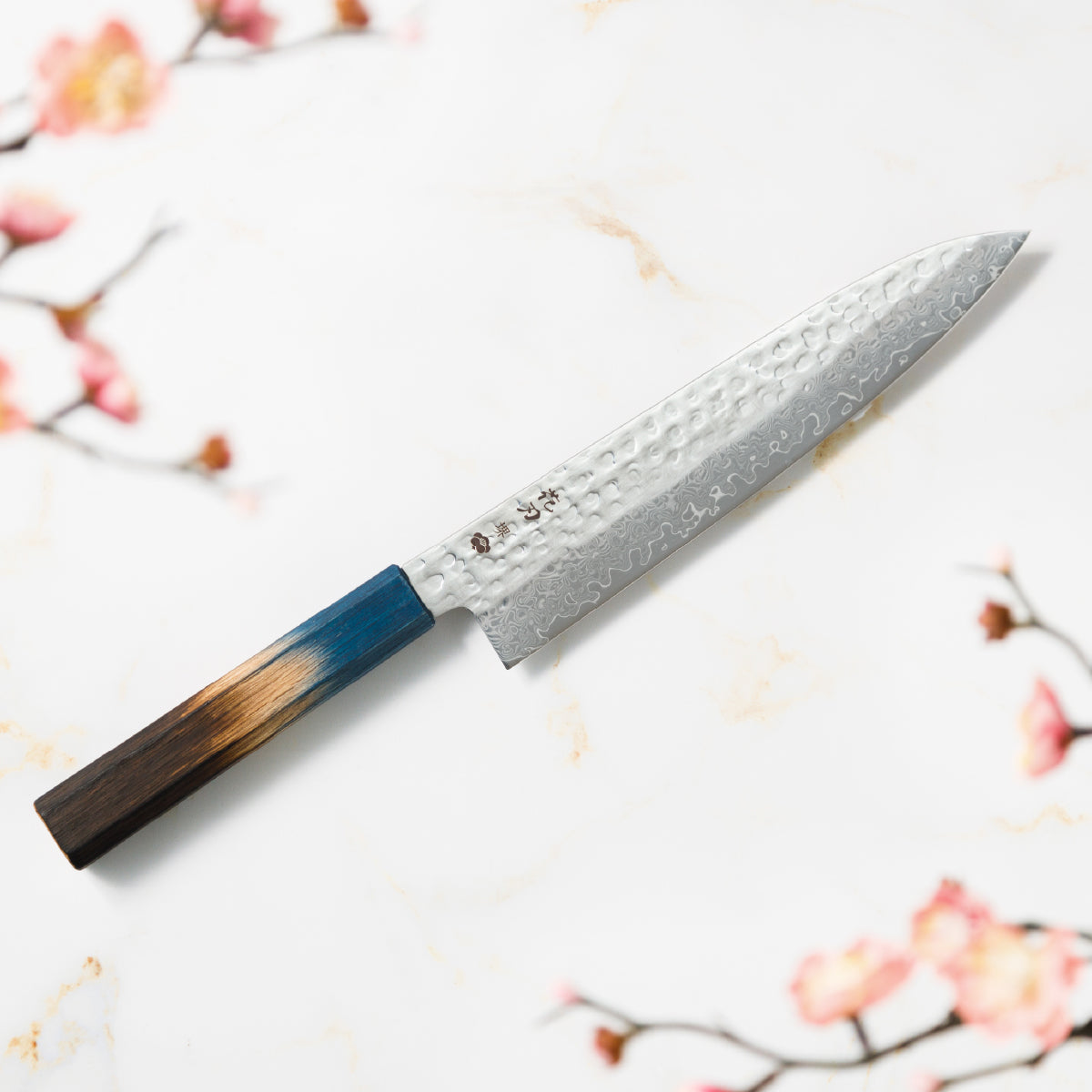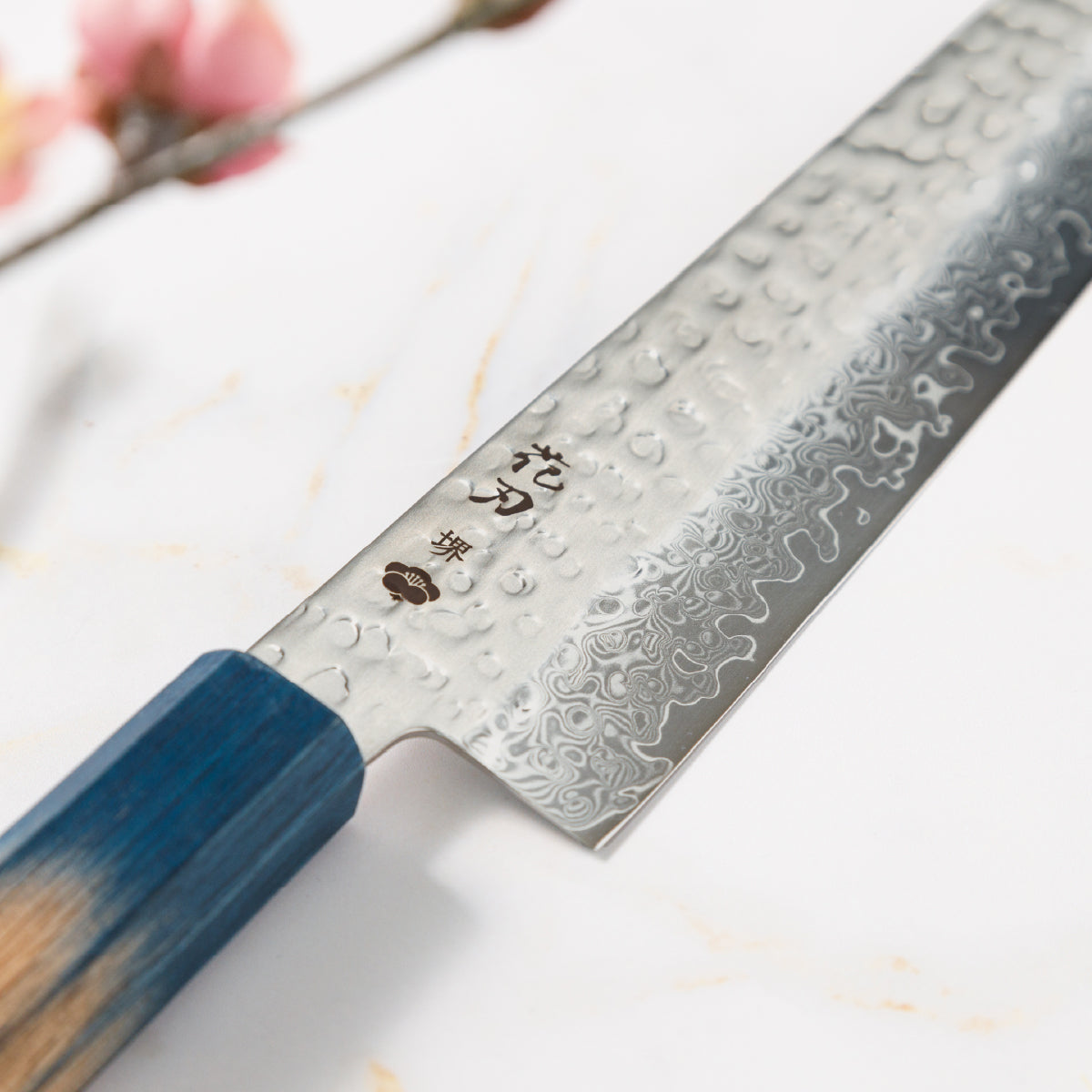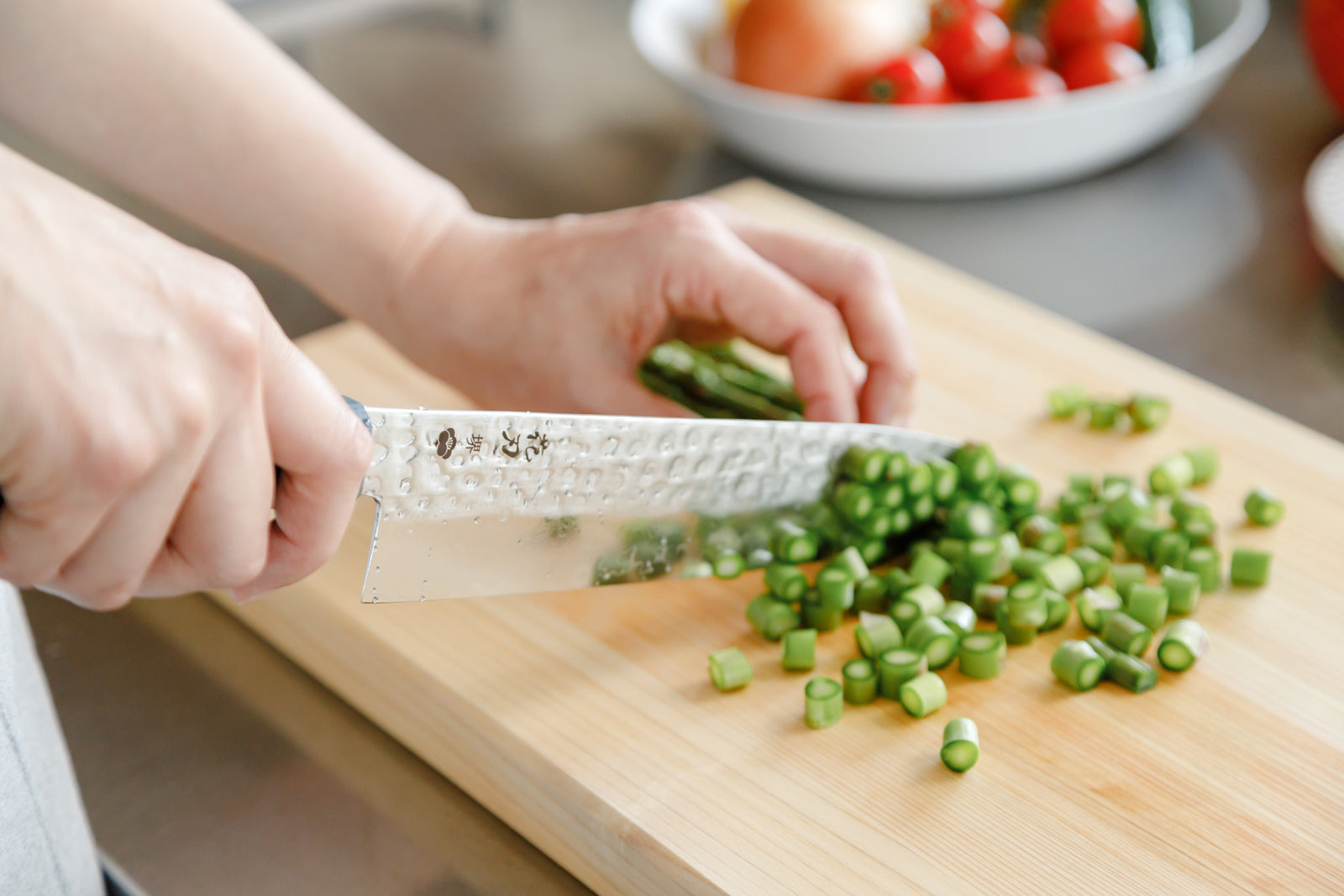
Still on the Fence? Why Every Home Cook Can Benefit From Owning a Japanese Knife.
Setting the Stage
You walk into the store and notice the sales signs all around you. It’s clearance day! And you’re first in line! Then you see it: the final temptation of many a home cook—the deluxe 14 piece knife block set.
Complete with more knives and tools than you’ll ever need, it seems like a no-brainer. And at just 50 bucks, a total steal… right?
The Reality
Many people, including myself, have fallen into this trap. But the truth is that while it may feel like a good investment, these discount knife sets are full of basic-quality products, unnecessary extras, and rarely last beyond your next birthday.
So what should you do?
Invest in a beautiful Japanese knife, of course!
Common Concerns
Diving into the world of Japanese knives is easier said than done.
Do they really cost that much money? What the heck does ‘high-carbon’ mean? And ‘molybdenum’—I can’t even pronounce that last one!
All these concerns may leave you sitting on the fence. But worry not, we’re here to set your mind at ease and address your concerns over buying a quality Japanese knife.
Aren’t Japanese Knives Really Expensive?
This is likely to be everyone’s first and last question. Without a doubt, dropping serious money makes people uncomfortable.
So to answer your question, Yes. A quality Japanese knife can be pricey.
With some things, you’re paying for the logo, but with high-carbon Japanese knives, you’re paying for true craftsmanship. Every curve—from the tip to the base—is painstakingly forged. Every material, meticulously chosen.
The expression goes, “you get what you pay for.” And with a Japanese knife, that’s never been more true.
I’m not a Professional Chef—Do I Really Need Something this Fancy?
A knife is a tool.
Would you ask the same about a quality hammer, just because you’re not a carpenter?
A high-end Japanese knife isn’t just for professional chefs, but for anyone who wants to take pride in what they cook—even if it’s just slicing a peanut butter sandwich for your hungry toddler.
It’s important to remember that these knives are often hand-forged, individually, by artisans who’ve been honing their craft for generations. When you buy a Japanese knife, you’re not just committing to an expensive tool, but participating in a history and culture that spans centuries.
Don’t They Require A Lot Of Maintenance?
Yes, a Japanese knife benefits from a little extra care.
No, it’s not nearly as much as you think.
The care needed for your quality knife is not a burden, nor should it feel like one. It is the pause in the busy whirlwind of your day. The moment of peace where you get to relax and take care of something you love. Caring for your knife is both minimal and meditative—and is likely to bring you much joy seeing the fruits of your labor.
For the average home cook, sharpening once every two months is all that's needed. Hand wash only. Dry soon after use. And remember to place it somewhere you can admire its beauty.
Can’t I Just Get a Cheaper Knife that is ‘Good Enough’?
Absolutely. But if you’re here reading this, it’s likely you are looking to up your game in the kitchen.
A cheaper knife might dice herbs—but it might also dice them into a sad, brown mush
A quality Japanese knife, made of high-carbon steel, built for durability, honed to a sharp edge by your very own hands. Well, that’s something that will allow you to cook with confidence, and recreate the stunning plating you always see on food channels.
A knife that’s “good enough” will give you meals that are just that — good enough. But a superb knife gives you something more: an experience.
What if I Regret the Purchase?
Listen, buyer's remorse is real, and no one can promise you won’t feel it. But we can also say that most people who invest in a high-quality Japanese knife don’t regret it—they wonder why they waited so long!
That being said, there’s no need to drop 500 dollars right off the bat. Many quality entry-level knives come in at much more reasonable price points, and can be the perfect way to experience their outstanding sharpness, balance, and longevity — all without the pressure of a major investment.
A great thing about a Japanese knife purchase is the sharpness right out of the box. Because of the materials and attention to detail that Japanese knives are made with, their box to board readiness is unmatched. Many Western knives require a bit of honing when first taken out, but a Japanese knife can be put to work right away.
The Last Slice
Whatever you choose, know this: investing in quality—real quality—almost never disappoints. When you buy a Japanese knife made by skilled hands, you’re not just getting a sharper blade. You’re bringing purpose, precision, and—most of all—joy into your everyday cooking.
It’s not just about cost; it’s about value. A well-made knife doesn’t wear out—it grows with you. And if you care for it, it will outlast trends, outlast sets, and maybe even outlast you.
Because in the end, this isn’t just a tool for your kitchen. It’s something you’ll reach for day after day, year after year. And one day, someone you love just might, too.




